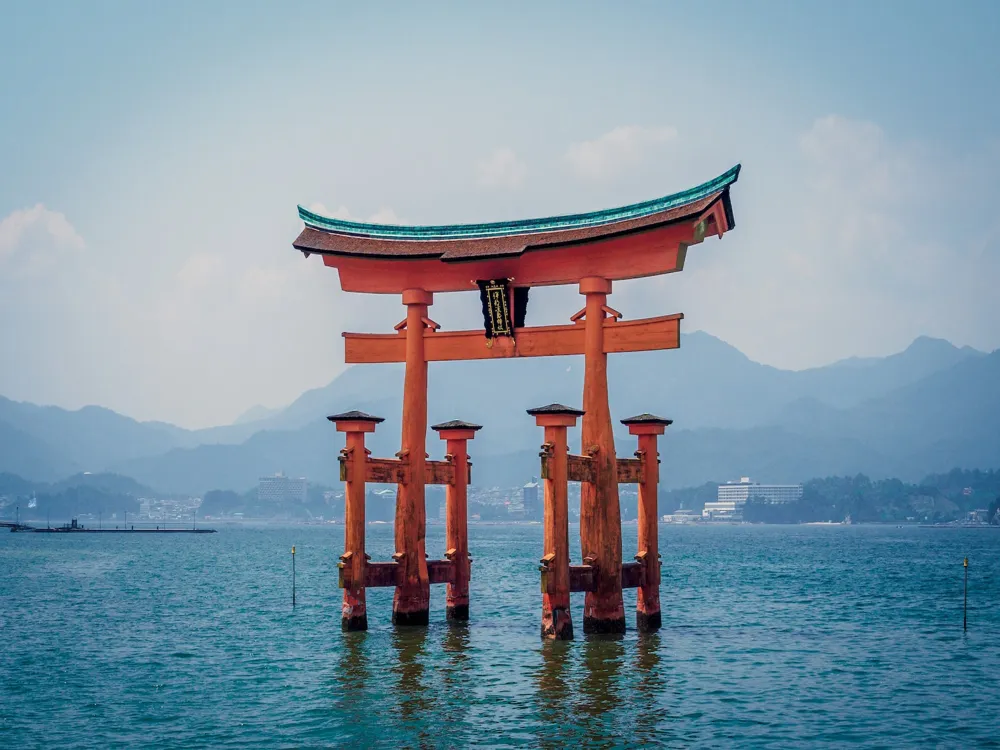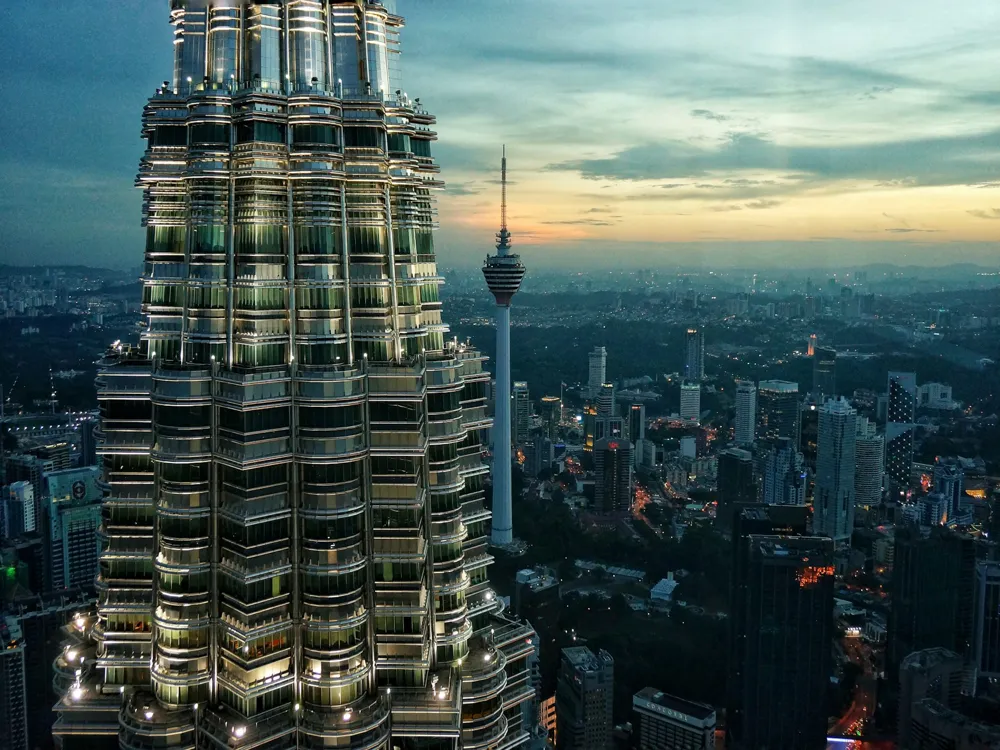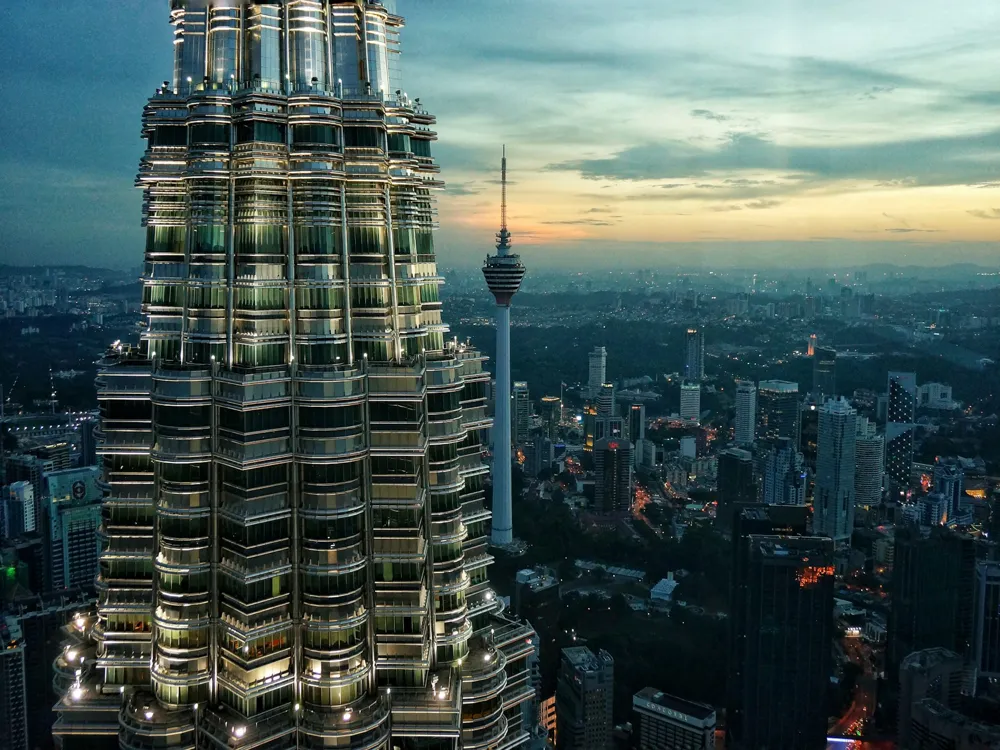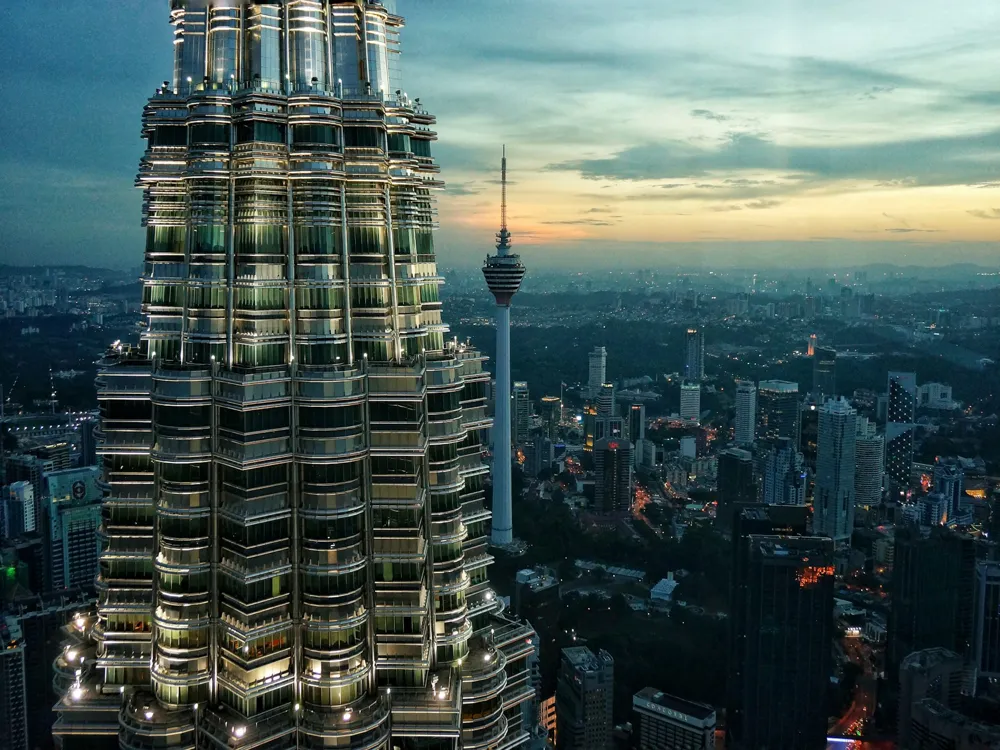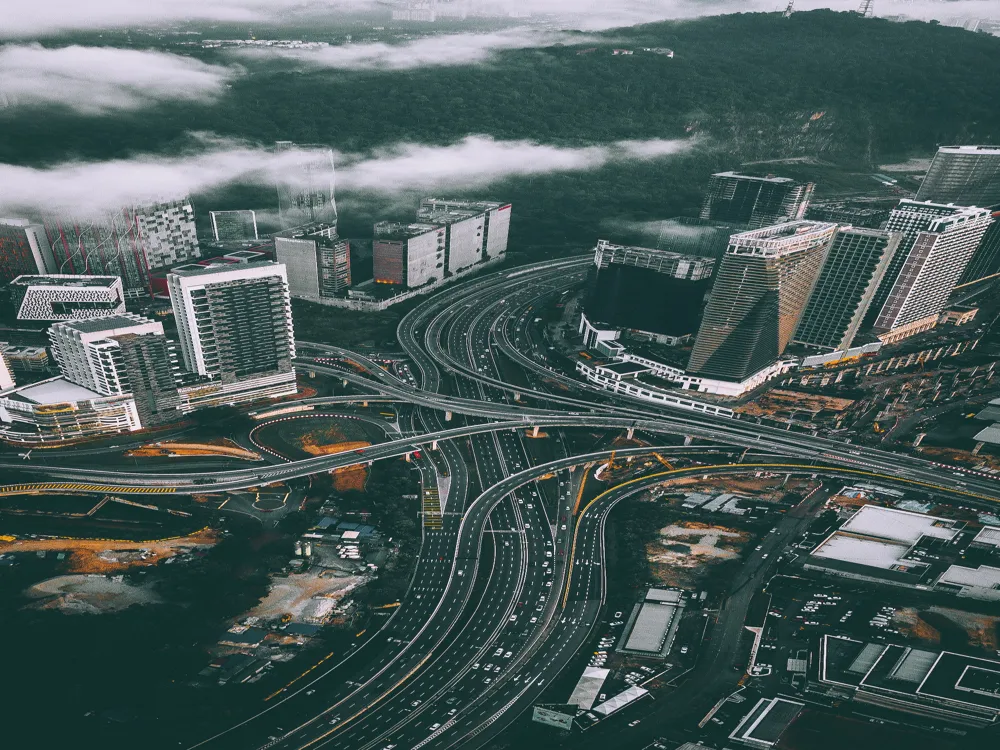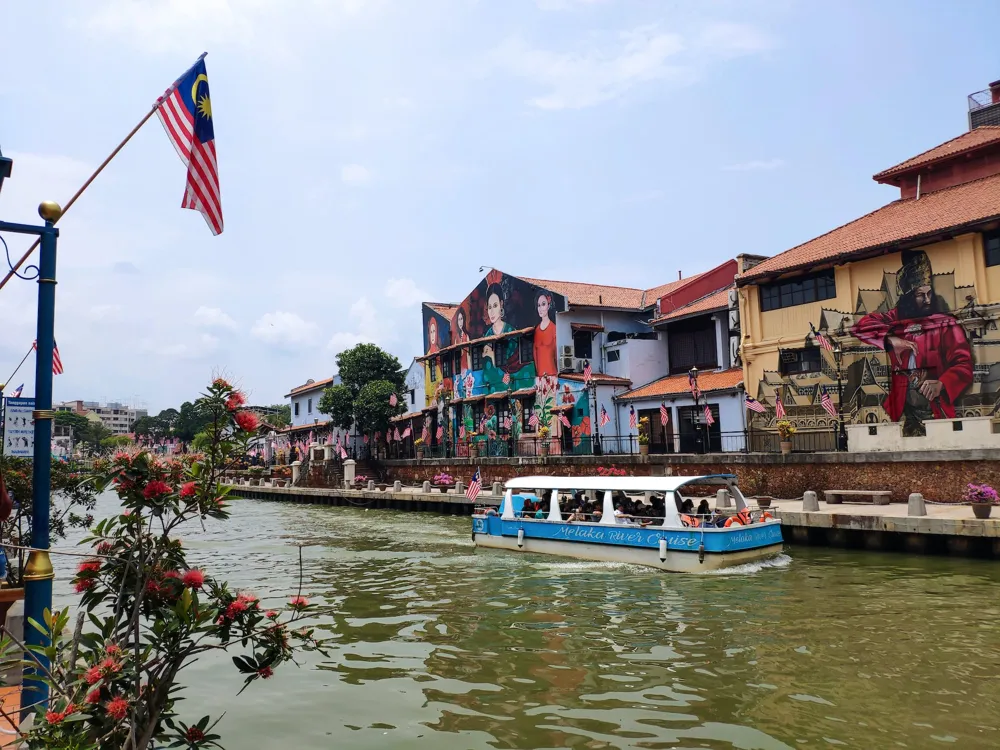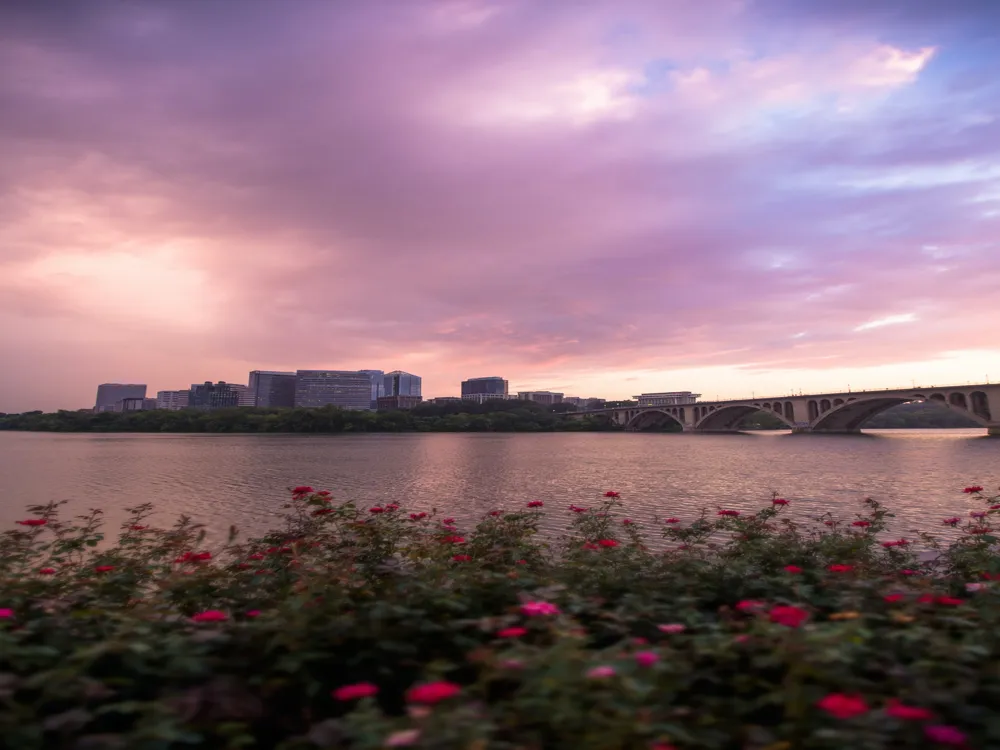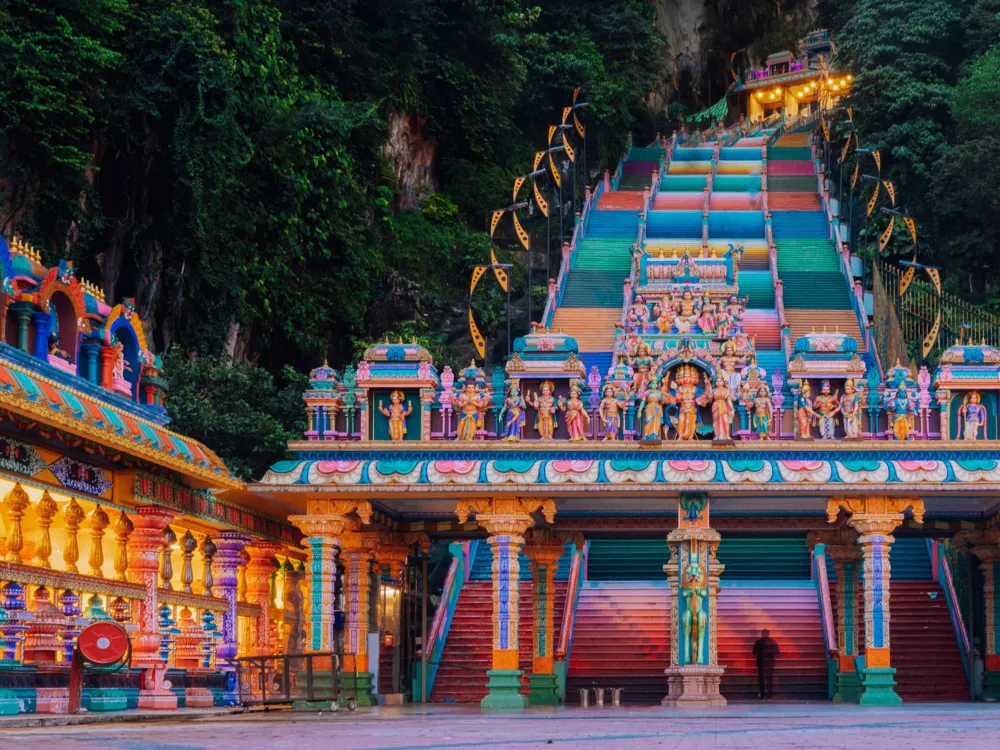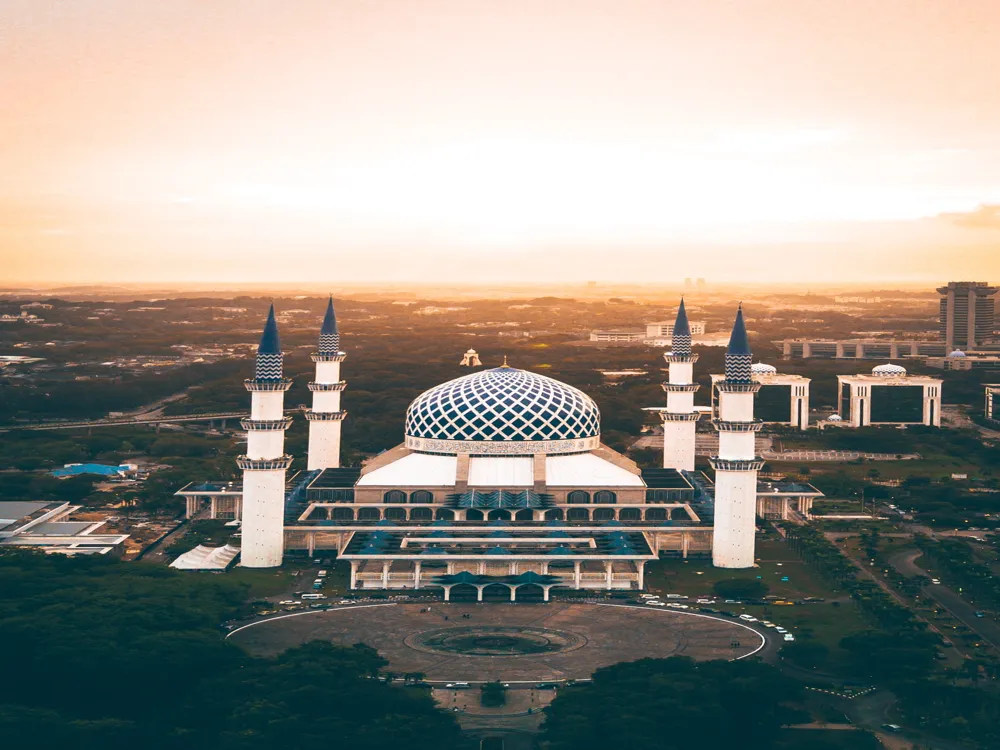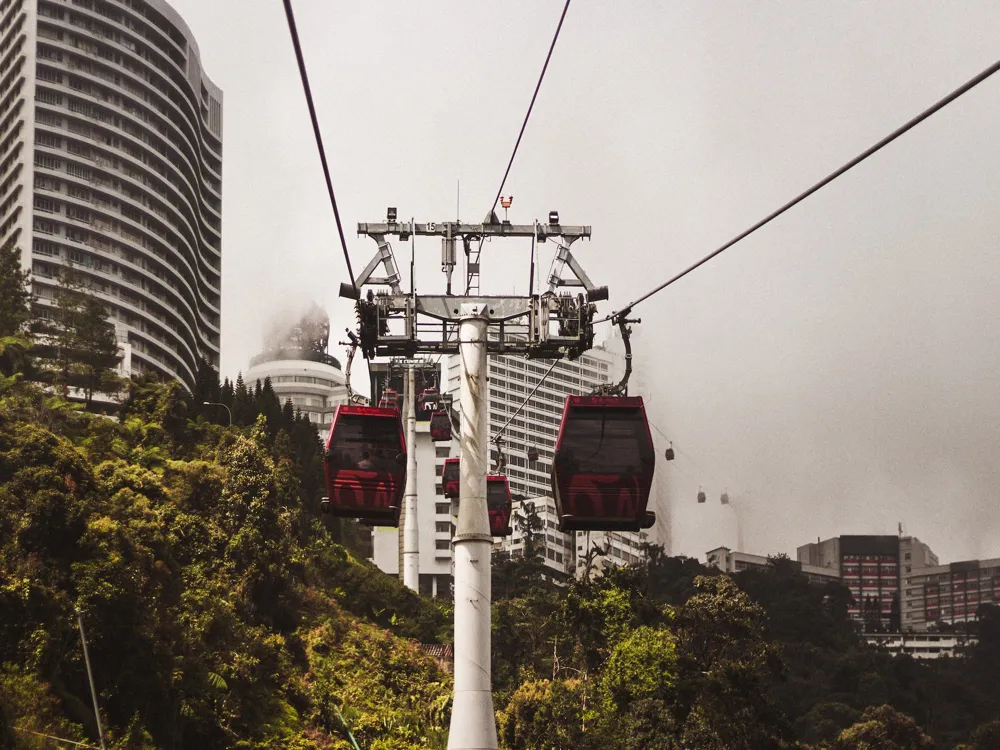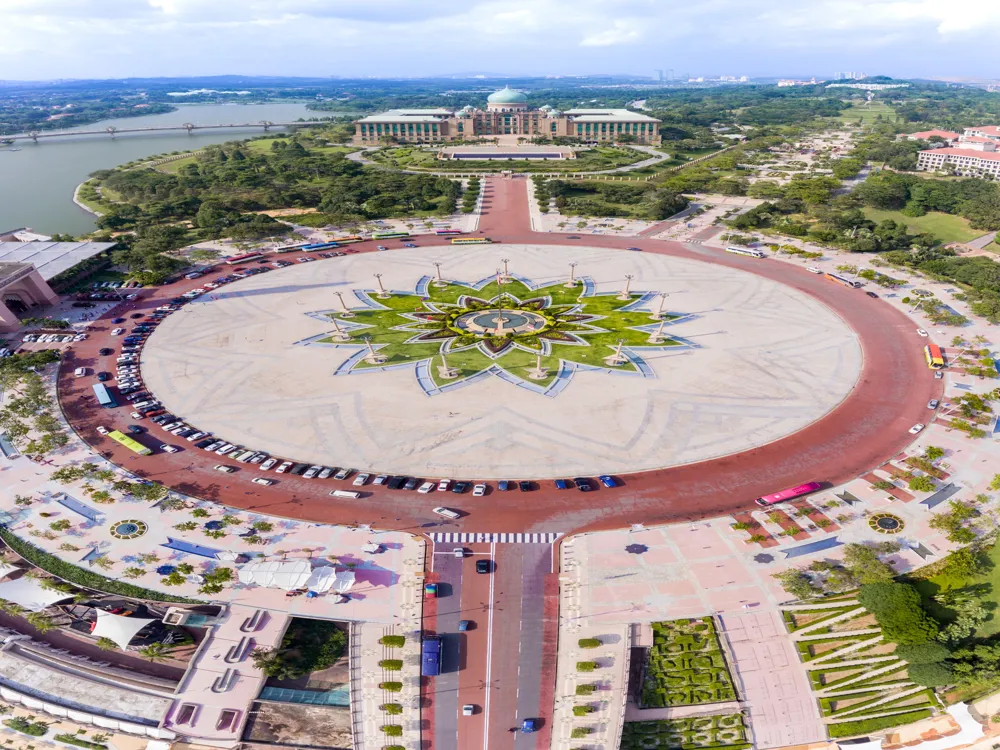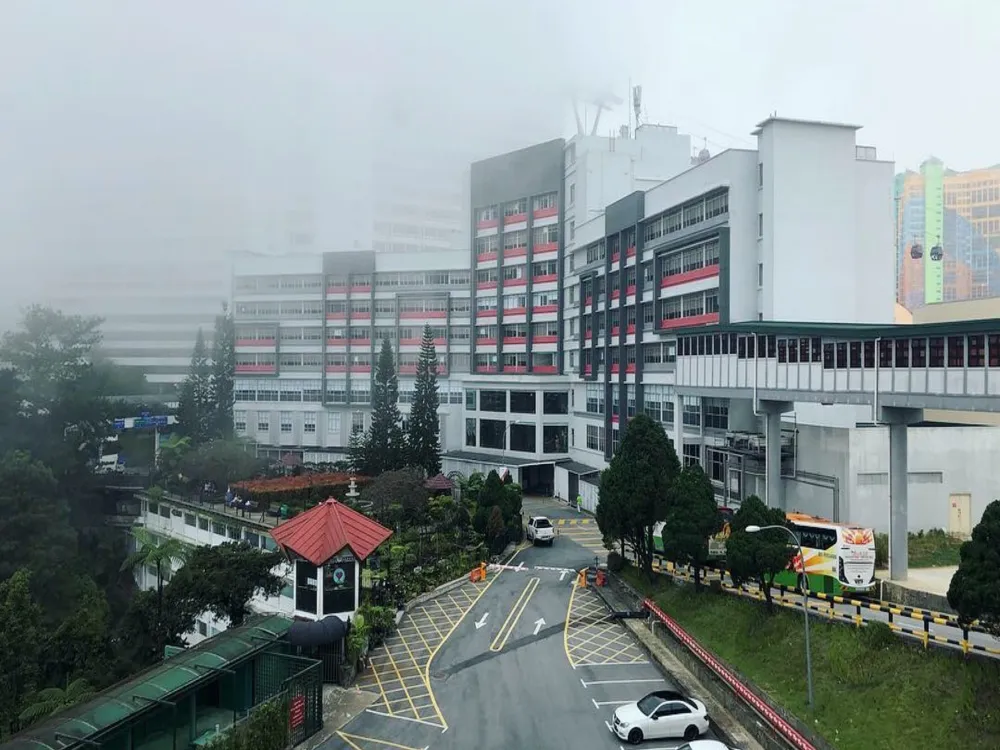The National Mosque of Malaysia, also known as Masjid Negara, stands as a symbol of Islam's importance and its integration into Malaysia's rich cultural tapestry. Located in the heart of Kuala Lumpur, the mosque holds a special place in the country's history and religious life. It was completed in 1965 and has since been a beacon of Islamic faith in Malaysia. The mosque's architecture is a stunning blend of traditional Islamic art and modern design, making it a unique landmark in Kuala Lumpur. The National Mosque's architecture is a remarkable fusion of contemporary design and traditional Islamic elements. The mosque's most striking feature is its 73-meter-high minaret, which serves as a symbol of Islamic faith. The main dome is star-shaped, which is a departure from the traditional domes seen in many Islamic structures. This design choice not only adds a modern touch but also symbolizes the 13 states of Malaysia and the five pillars of Islam, integrating the country's national identity with its religious beliefs. The mosque's facade is adorned with intricate Islamic calligraphy and geometric patterns, typical of Islamic art. The use of marble, reflective pools, and large open spaces give the mosque a serene and peaceful ambiance. The interior of the mosque is equally impressive, with its vast prayer hall, high-quality acoustics, and a sense of openness and inclusivity. The incorporation of natural light and the strategic use of water elements create a tranquil and contemplative environment for worshippers and visitors alike. The construction of the National Mosque was in response to Malaysia's independence in 1957. It was intended to symbolize the country's freedom and progress while retaining its religious and cultural roots. The mosque can accommodate up to 15,000 worshippers, making it one of the largest in Southeast Asia. Its role extends beyond a place of worship; it serves as a center for Islamic learning and cultural exchange, highlighting the inclusive nature of Malaysian society. The mosque's design reflects the innovative spirit of its architects, who sought to create a space that was both functional and symbolic. The use of modern materials like concrete and the incorporation of green spaces and water features were ahead of its time, making the mosque an architectural marvel. The design also considers the tropical climate of Malaysia, with features that provide ventilation and shade, ensuring a comfortable environment for worshippers. Art plays a significant role in the mosque's design, with calligraphy, tile work, and arabesque patterns featured throughout the building. These elements are not just decorative; they carry deep religious and cultural significance, narrating stories from the Quran and Islamic history. The careful balance between art, architecture, and spirituality is a testament to the mosque's significance as a symbol of Islamic heritage in Malaysia. Visitors are required to dress modestly as a sign of respect. Clothing should cover the shoulders and knees. Robes and headscarves are provided at the entrance for those who need them. The mosque is open to visitors except during prayer times, particularly on Fridays. It's recommended to check the visiting hours beforehand to plan your visit accordingly. Free guided tours are available and are a great way to learn about the mosque's history, architecture, and the Islamic faith. These tours provide valuable insights and a deeper understanding of the cultural significance of the mosque. Photography is allowed, but it's important to be respectful. Avoid taking pictures of worshippers or during prayer times. Always ask for permission if you want to photograph individuals. Visitors should speak softly and avoid running or shouting in the mosque premises. It's a place of worship and reflection, and maintaining a peaceful environment is important. Reaching the National Mosque of Malaysia is convenient, as it is located near the heart of Kuala Lumpur. Visitors can use various modes of transportation: Read More:Overview of the National Mosque of Malaysia, Kuala Lumpur
Architecture of the National Mosque of Malaysia
History and Significance
Design Innovations
Artistic Elements
Tips When Visiting the National Mosque of Malaysia
Dress Code
Visiting Hours
Guided Tours
Photography Etiquette
Respecting the Religious Space
How To Reach the National Mosque of Malaysia
National Mosque of Malaysia
Kuala Lumpur
₹ 18,000 onwards
View kuala-lumpur Packages
Weather :
Tags : Mosque
Timings : Saturday - Thursday: 9:00 AM - 11:00 AM Friday: 2:45 AM - 6:00 PM
Entry Fee : No entry fee
Planning a Trip? Ask Your Question
Kuala-lumpur Travel Packages
View All Packages For Kuala-lumpur
Top Hotel Collections for Kuala-lumpur

Private Pool

Luxury Hotels

5-Star Hotels

Pet Friendly
Top Hotels Near Kuala-lumpur
Other Top Ranking Places In Kuala-lumpur
View All Places To Visit In kuala-lumpur
View kuala-lumpur Packages
Weather :
Tags : Mosque
Timings : Saturday - Thursday: 9:00 AM - 11:00 AM Friday: 2:45 AM - 6:00 PM
Entry Fee : No entry fee
Planning a Trip? Ask Your Question
Kuala-lumpur Travel Packages
View All Packages For Kuala-lumpur
Top Hotel Collections for Kuala-lumpur

Private Pool

Luxury Hotels

5-Star Hotels

Pet Friendly







